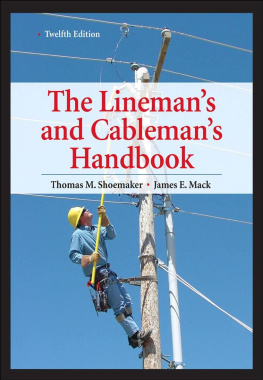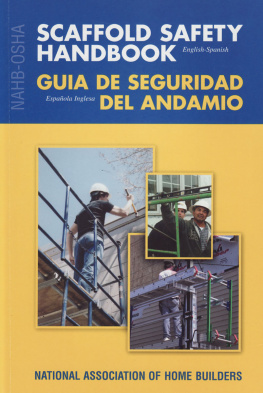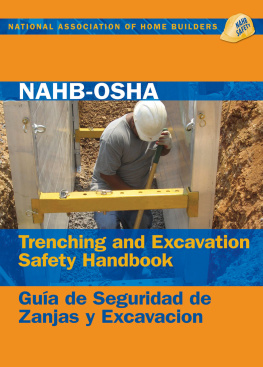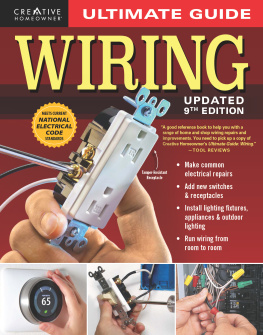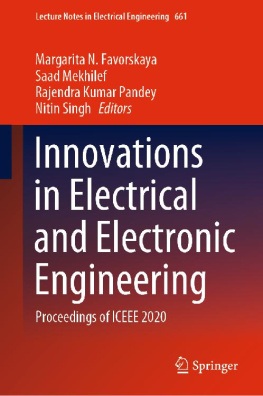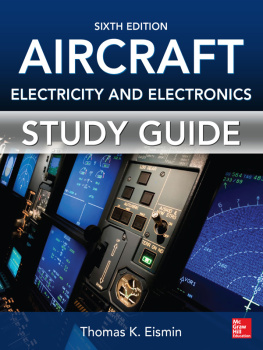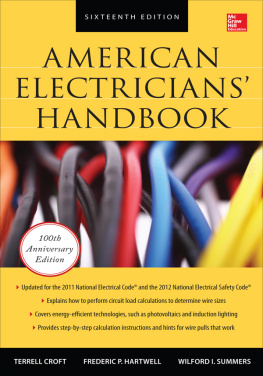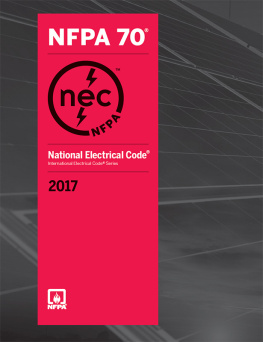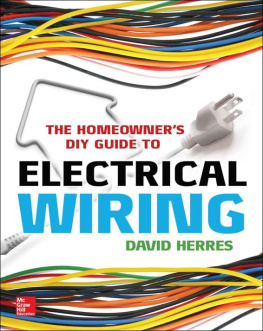

Copyright 2012, 2007, 2002, 1998, 1992, 1986, 1981, 1976, 1964, 1955 by The McGraw-Hill Companies, Inc. All rights reserved. Except as permitted under the United States Copyright Act of 1976, no part of this publication may be reproduced or distributed in any form or by any means, or stored in a database or retrieval system, without the prior written permission of the publisher.
ISBN: 978-0-07-174257-3
MHID: 0-07-174257-3
The material in this eBook also appears in the print version of this title: ISBN: 978-0-07-174258-0, MHID: 0-07-174258-1.
All trademarks are trademarks of their respective owners. Rather than put a trademark symbol after every occurrence of a trademarked name, we use names in an editorial fashion only, and to the benefit of the trademark owner, with no intention of infringement of the trademark. Where such designations appear in this book, they have been printed with initial caps.
McGraw-Hill eBooks are available at special quantity discounts to use as premiums and sales promotions, or for use in corporate training programs. To contact a representative please e-mail us at bulksales@mcgraw-hill.com.
Copyright renewed 1970, 1956 by edwin b. Kurtz.
Copyright 1942, 1928 by McGraw-Hill, Inc. all rights reserved.
Information contained in this work has been obtained by The McGraw-Hill Companies, Inc. (McGraw-Hill) from sources believed to be reliable. However, neither McGraw-Hill nor its authors guarantee the accuracy or completeness of any information published herein, and neither McGraw-Hill nor its authors shall be responsible for any errors, omissions, or damages arising out of use of this information. This work is published with the understanding that McGraw-Hill and its authors are supplying information but are not attempting to render engineering or other professional services. If such services are required, the assistance of an appropriate professional should be sought.
TERMS OF USE
This is a copyrighted work and The McGraw-Hill Companies, Inc. (McGraw-Hill) and its licensors reserve all rights in and to the work. Use of this work is subject to these terms. Except as permitted under the Copyright Act of 1976 and the right to store and retrieve one copy of the work, you may not decompile, disassemble, reverse engineer, reproduce, modify, create derivative works based upon, transmit, distribute, disseminate, sell, publish or sublicense the work or any part of it without McGraw-Hills prior consent. You may use the work for your own noncommercial and personal use; any other use of the work is strictly prohibited. Your right to use the work may be terminated if you fail to comply with these terms.
THE WORK IS PROVIDED AS IS. McGRAW-HILL AND ITS LICENSORS MAKE NO GUARANTEES OR WARRANTIES AS TO THE ACCURACY, ADEQUACY OR COMPLETENESS OF OR RESULTS TO BE OBTAINED FROM USING THE WORK, INCLUDING ANY INFORMATION THAT CAN BE ACCESSED THROUGH THE WORK VIA HYPERLINK OR OTHERWISE, AND EXPRESSLY DISCLAIM ANY WARRANTY, EXPRESS OR IMPLIED, INCLUDING BUT NOT LIMITED TO IMPLIED WARRANTIES OF MERCHANTABILITY OR FITNESS FOR A PARTICULAR PURPOSE. McGraw-Hill and its licensors do not warrant or guarantee that the functions contained in the work will meet your requirements or that its operation will be uninterrupted or error free. Neither McGraw-Hill nor its licensors shall be liable to you or anyone else for any inaccuracy, error or omission, regardless of cause, in the work or for any damages resulting therefrom. McGraw-Hill has no responsibility for the content of any information accessed through the work. Under no circumstances shall McGraw-Hill and/or its licensors be liable for any indirect, incidental, special, punitive, consequential or similar damages that result from the use of or inability to use the work, even if any of them has been advised of the possibility of such damages. This limitation of liability shall apply to any claim or cause whatsoever whether such claim or cause arises in contract, tort or otherwise.
About the Editors
Thomas M. Shoemaker is a Life Senior Member of the Institute of Electrical and Electronics Engineers.
James E. Mack is the Manager of Electric Reliability at the MidAmerican Energy Company. He is a Senior Member of the Institute of Electrical and Electronics Engineers and a Member of the National Society of Professional Engineers.
Contents
Preface
This Handbook is written for the apprentice, the lineman, the cableman, the foreman, the supervisor, and other employees of electric line construction contractors and transmission and distribution departments of electric utility companies. It is primarily intended to be used as an apprenticeship textbook and a home-study book to supplement daily work experiences. This Handbook has 50 chapters; 11 chapters are devoted to a general understanding of electricity, electrical terms, and electric-power systems; 31 chapters are devoted to actual construction of overhead and underground distribution and transmission lines and to maintenance procedures; and 7 chapters are expressly devoted to safety guidelines. The final chapter can be used by the reader as a self-examination of the information presented.
All chapters in this Twelfth Edition have been revised where necessary to be consistent with the newest equipment, techniques, and procedures. A special effort was made to present all discussions clearly and in simple language. As in previous editions, a large number of illustrations showing the construction and maintenance processes are provided to assist the reader in a better understanding of the text. The illustrations clarify many details that would require additional words to express. Many of the photographs were taken specifically for use in this edition. They portray the practices in use by some of the foremost electric utility and contracting companies in the United States.
Methods of transmission-, distribution-, and rural-line construction have become quite standardized since the First Edition of the Handbook was published in 1928. The construction procedures described and illustrated are in most instances representative of general practice. While each operating company has its own standards of construction to which its linemen and cablemen must adhere, the procedures described explain why things are done in a given way. Such basic knowledge will be helpful to the lineman or cableman who is interested in learning the whys and wherefores of doing things one way or another.
Safety is emphasized throughout this book. Of course, understanding the principles involved in any operation and knowing the reasons for doing things a given way are the best aids to safety. The opinion has become quite firmly established that a person is not a good lineman unless he does his work in accordance with established safety procedures and without injury to himself or others. It is necessary for those engaged in electrical work to know the safety rules and the precautions applicable to their trades, as specified in the National Electrical Safety Code, Occupational Safety and Health Act (OSHA) standards, and their employers safety manuals and standards, and to make the observance of safety rules and procedures an inseparable part of their working habits.
This Handbook places emphasis on the National Electrical Safety Code, OSHA standards, American National Standards Institute (ANSI) standards, and ASTM International (formerly known as the American Society for Testing and Materials) standards. Important requirements of all of these are discussed, but the
Next page
